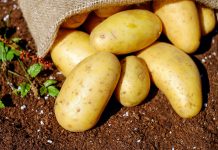As off-griders, farmers, and homesteaders all over the world are increasingly feeling the effects of climate change on their crops and livelihoods, it is more important than ever to understand how you can breed your plants for resilience.
A holistic approach to breeding takes into consideration a variety of strategies focused on selectively improving plant genetic makeup to improve yields and adaptability against pests, disease, or climatic variations.
In this blog post, we will explore how plant genetics can help inform growers’ decisions by providing insights targeted specifically towards creating resilient varieties that are better able to weather changing climates.
Introducing Resilience Breeding – What it Is and How It Works
Resilience breeding is a process of producing plant varieties that are resistant to changes in the environment, diseases, and pests.
Using traditional methods of mating plants with desirable traits and isolating those traits in offspring, breeders can create new varieties that are tolerant of extreme conditions.
The final product can be used for food production, energy conservation, and more. Depending on the traits desired, various selection practices may be used such as selecting from existing crops or combining species of distant origin.
This type of practice is labor-intensive but makes resilient and adaptive crop varieties available to the world at large.
Exploring the Benefits of Resilience Breeding for Climate Change Adaptation
Apart from the obvious damages caused by climate change, agricultural production can also be affected. In this context, resilience breeding is a strategy increasingly used to reduce the impacts of climate change on agricultural systems.
By breeding crops and livestock adapted to increasing variability in humidity, temperature, soil fertility, and other climate elements, farmers can improve their ability to withstand these conditions and maintain successful crop yields despite them changing.
Furthermore, this strategy offers environmental benefits such as the acceleration of adaptation processes at the local level with no need for genetic modification and biological engineering under European regulations.
Lastly, resilience breeding can facilitate the integration of multifunctional agroforestry systems that combine trees with traditional crops and livestock on farms; resulting in not just increased food security but also higher incomes for farmers who adopt it. For tree services Greensboro contact General Tree Service, Inc..
Examining Current Examples of Resilience Breeding in Plants
In recent years, scientists have studied the remarkable ability of certain plants to survive extreme conditions. Examples of plant resilience breeding are seen in species like the resurrection fern that can withstand drought for years and then spring back with new growth after just a few hours of water or the Australian grass tree which survives bushfires by relying on underground buds that come alive afterward.
Scientists also study how certain plants can respond to environmental changes with quick adaptations and increased survivability due to genetic triggers.
By examining current examples of such resilience breeding among plants, we gain valuable insight into how adaptable and precious life forms can be in the face of adversity.
Investigating Strategies to Enhance Plant Genetics for Resilience Breeding
Rapid environmental changes and unpredictable extremes of weather pose numerous challenges to plant breeding programs and reliable crop yields.
Fortunately, state-of-the-art genetic technologies are increasingly available to assist with investigating strategies to enhance the resilience of plants.
By optimizing genetic combinations based on the evaluation of markers in families of plants with known characteristics, recognized approaches such as gene editing, assisted gene selection, and mutagenesis can help explore ways to produce new varieties that are resistant to disease and tolerant of unfavorable climatic conditions.
In addition, identifying epidemiological patterns among species over time is an important tool for evaluating the significance of naturally occurring variations in plant genetics that could contribute to solutions adapted to unforeseen agricultural disasters.
As a result of such innovations, strides have been made towards safeguarding the future sustainability of our crops and now it is possible to address more successfully the threat posed by climate change on food production.
Building on Existing Knowledge to Increase Plant Diversity and Adaptability
For scientists, discovering new methods to increase plant diversity and adaptability is an important research goal.
By utilizing existing scientific knowledge of the ways plants interact with their environment, researchers can create innovative strategies that could revolutionize how species diversity is maintained in the future.
Through targeted breeding methods, reduced water consumption strategies, or even advanced agricultural technology for hard-to-reach areas, scientists have the potential to gain insight into how plant DNA can become more adaptive long-term.
Plant biodiversity is essential for sustaining a healthy and robust environmental ecosystem; through leveraging past knowledge and research developments, we can strive to maintain diverse environments that are equipped to resist heat, drought, and other stresses as climate change continues.
Considering the Future of Climate Change-Ready Crops Through Resilient Breeding Solutions
Investments in advanced climate-ready crops through resilient breeding solutions are becoming increasingly important as the global climate is changing.
A variety of new climate scenarios are continuously impacting strategies carried out by different agricultural sectors, and we must be ready to meet these challenges.
Resilient crops, which can grow in harsher environments and withstand different temperatures, pests, and diseases, can be a valuable asset for agriculture moving forward.
Additionally, breeding solutions that focus on genetic diversity to make crops more resistant to abiotic stresses (i.e., drought) can help ensure our food supply remains secure throughout times of rapid environmental change.
Ultimately, considering future climate-ready crop requirements and investing time and resources into resilient breeding solutions provides an opportunity to reduce some of the significant costs associated with adaptation to changing weather patterns.
As the world faces climate change, resilience breeding is becoming increasingly important to ensure crops are adapted to an ever-changing environment.
The power of this research lies in understanding which traits can be incorporated into plants for the best possible outcome.
Through decades of work and the advancement of modern science, plant genetics have been pushed to new heights, helping farmers protect their lands from unpredictable weather.
Resilience breeding helps bridge the gap between current knowledge and future adaptation by finding ways to improve existing genetics or use pre-existing diversity to choose varieties that suit particular locations.
With a focus on strategic planning and input from experts in both academia and industry, resilience breeding has already achieved great things — but its greatest accomplishments may still be yet to come.













